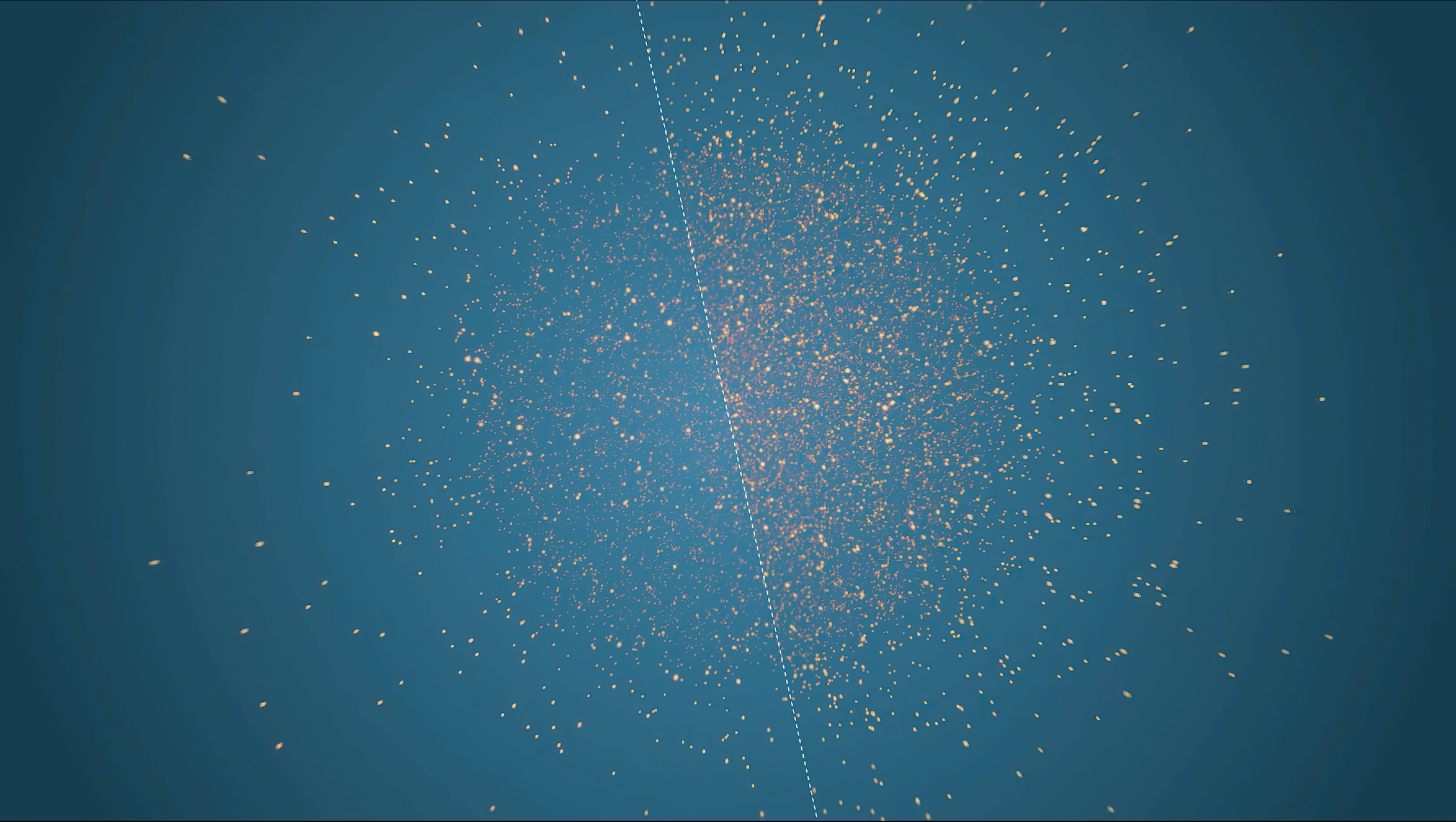
Simulated image of the protons in an LHC bunch (left) and an HL-LHC bunch (right). (Image: CERN)
Intensity is rising in the Large Hadron Collider (LHC): last week, the accelerator propelled particle bunches containing more than 230 billion protons (2.3 x 1011): 40% more than standard bunches. As they collided inside the experiments, these bunches generated an average of 150 collisions, compared to around 65 collisions during ordinary operations. These tests, which ran for several hours, were aiming to study the lifespan of beams in collision mode, in conditions similar to those expected in the High-Luminosity (HL-LHC).
The HL-LHC, due to be commissioned in 2030, will significantly increase the number of collisions that occur inside the accelerator. For this, it requires new equipment that will concentrate the particle beams just before they cross at the heart of the ATLAS and CMS experiments. It also called for a major upgrade of the CERN accelerator complex.
Before being shot into the 27-kilometre loop of the LHC, particles are revved up by a succession of four other accelerators which form the injector chain. An extensive upgrade programme (LHC Injectors Upgrade - LIU) was performed on each of the links in this chain so as to produce more intense beams, i.e. containing more particles. "One of the objectives was to double the number of protons in each bunch, and at the same time reduce their dispersion", explains Giovanni Rumolo, accelerator physicist and former deputy leader of the LIU project.
This project, which took place over a ten-year period ending in 2021, involved multiple worksites, including the commissioning of a new linear accelerator, Linac 4, which is the first link in the accelerator chain, and major renovations and upgrades of all the other injectors and of the infrastructure required for their operation.
When this work was completed, experts spent another four years commissioning and optimising the beams in each injector. For the first time last May, the injection chain produced a beam with the expected characteristics: an intensity of 230 billion protons per bunch (2.3 × 10¹¹) and a cross-sectional dimension (emittance) of 1.95 micrometres. Yet this beam still needed to circulate in the LHC. So last week, the LHC accelerated these intense beams up to 6.8 TeV before bringing them into collision inside the experiments.
However, only 600 bunches were circulated during this test - compared to around 2 500 during an ordinary run - in order to avoid overloading the accelerator and the experiments. The HL-LHC will circulate over 2 700 bunches; its new focusing magnets, which are more powerful than those installed today, will concentrate these bunches in order to obtain even higher luminosity.
"The next step is to check that these beams can be produced in a stable and repeatable manner", Rumolo continues. The beam tests will continue until summer 2026 and the start of start the long shutdown, during which the equipment for the high luminosity phase will be installed.







